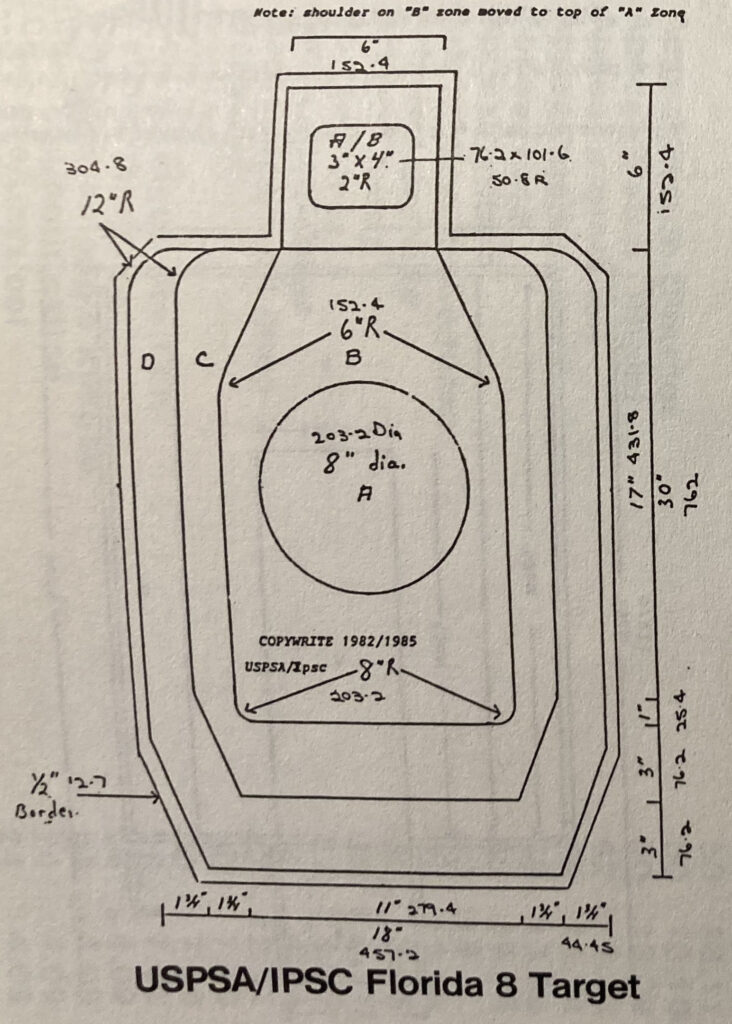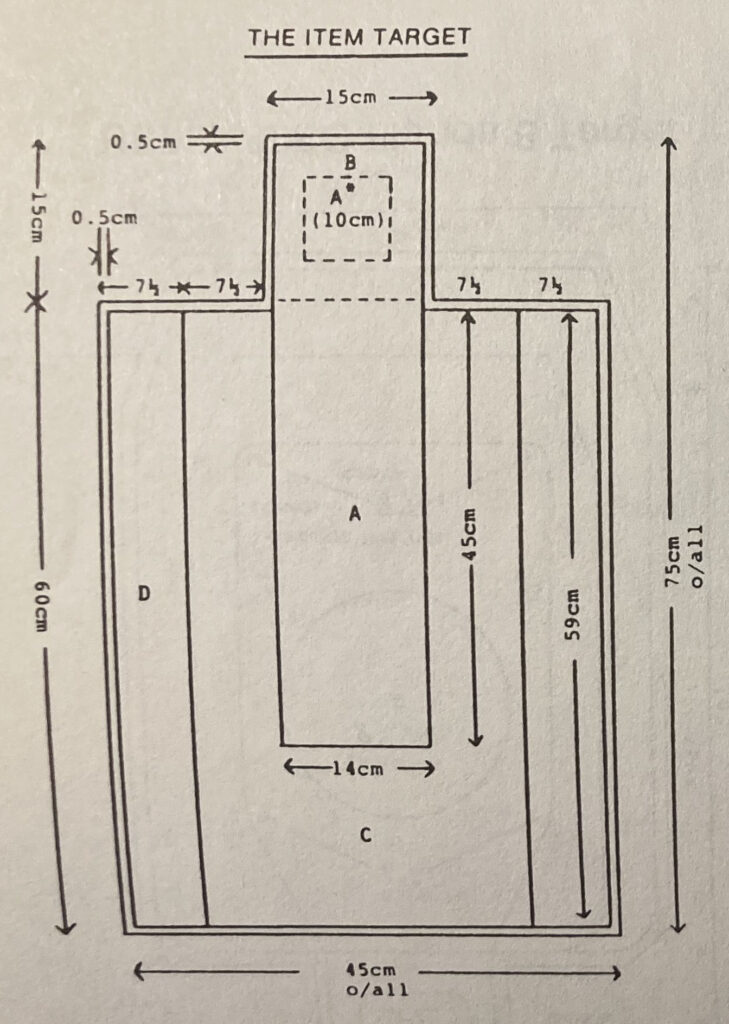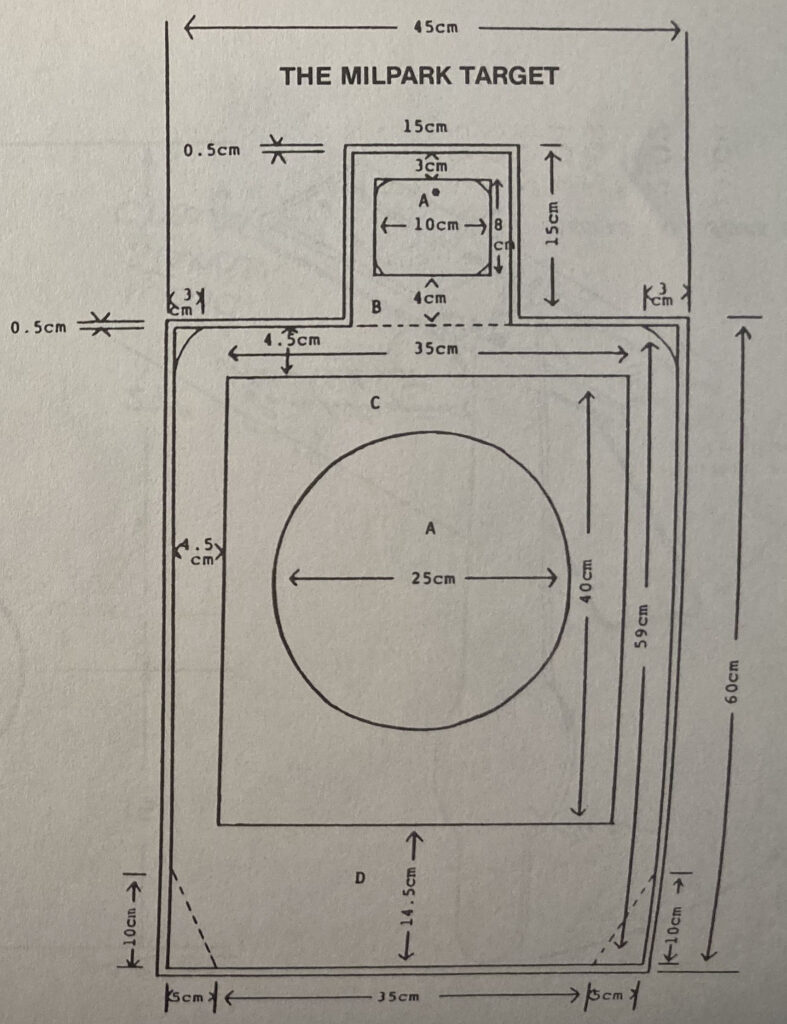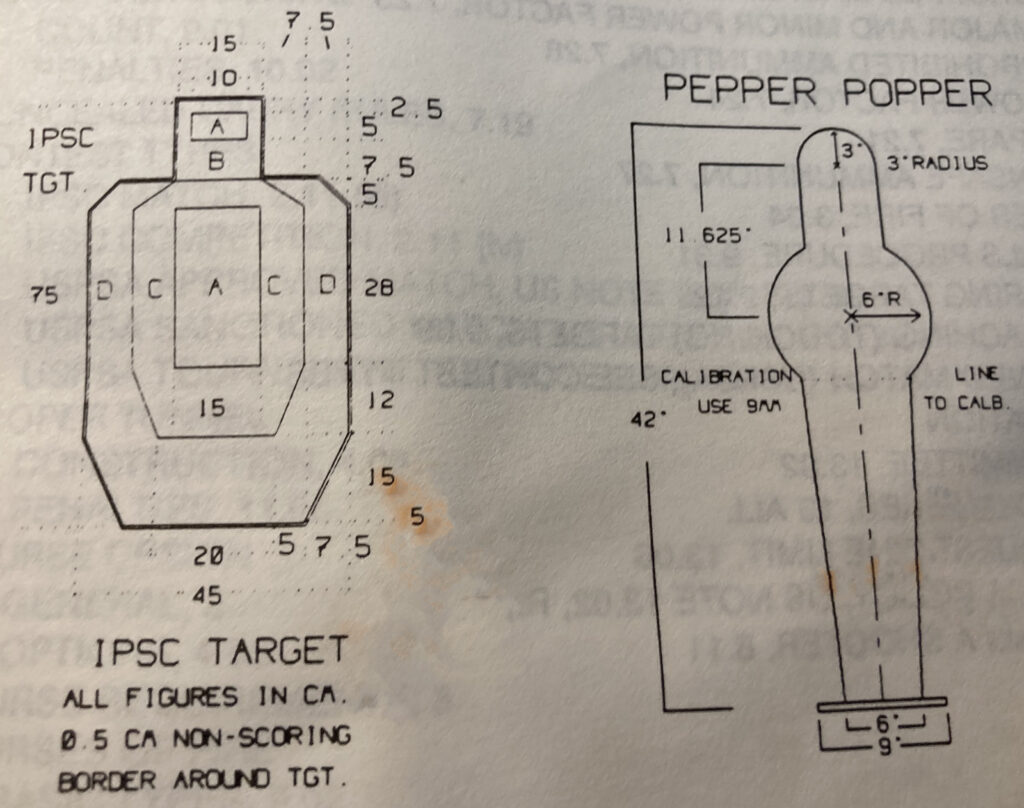For many years I have discussed how the “Classic/IPSC” target was nothing of the sort. In fact, it was mis-named and was a sore point to some older USPSA/IPSC shooters. So, to bring some order to this conversation let us go back to the distant past and explore where we came from.
When I started shooting in 1984 at Midwest Sporting Goods in Lyons, Illinois the original name of the club was Lyons Combat League, but it was changed to Midwest Practical Shooters Association. The most common target we used was the Milpark. The other two most common targets were the Florida 8, now used in IDPA, and the Item Target. I went on to the internet and guess what, I could not find any modern versions of the targets we are discussing. Thankfully, I have my copy of the 3rd Edition of the IPSC Rulebook and the handouts from my original Range Officer training from February 1988. (Check out the USPSA Rules History to learn about the different rulebooks and IPSC and USPSA relationship.)



When I took the RO class, it was clear there had been a rulebook change which had taken place, but the class was held before the 4th Edition IPSC Rulebook was distributed. Why this is relevant is because the “new” IPSC target (we now know it as the USPSA target) was introduced in that 4th edition. It was called the IPSC target, but was commonly referred to as the “Brussels” target.

One of the major differences in scoring then compared to now was any hit in the A/B was only scored as an Alpha hit when the written stage briefing called for a shot above the dotted line. Otherwise, it was scored as a Bravo hit. On the Florida 8 the center hit in the upper area could be called as either an A or B as specified in WSB since there was no dotted line on that target.
As you can imagine this made for some interesting scoring calls. I believe the rationale was based on the concept that most A/B hits were caused by a shooter riding the recoil rather than a deliberate target engagement. Many times, I have seen course designer’s blackout the upper A/B (now A/C) zone to prevent a “lucky” hit from scoring. Remember, in the 1980’s the power factor for major went from 180 to 175. In the 3rd Edition it states the US rule was 170 power factor for Major. However, that was raised to 175 on the 4th Edition, and remained there for many years.
So, it was decided in the 4th Edition of the IPSC rulebook to use a single target for all competition. One of the major changes for scoring was an A hit was always scored as an Alpha whether it was in the center of the target or in the A/B panel “head”. This simplified scoring and removed any requirement for designating whether a “head” shot would an Alpha or Bravo hit. That also seemed to end the common use of the two hits in the body, one hit in the head type stages, i.e Mozambique or Failure Drill.
As time went along, two changes were made. At the 1991 Nationals, the US Popper (now called the USPSA Mini-Popper) was introduced. This was a 2/3 size popper using an offset hinge design. In the 6th Edition 1992 of the rulebook, the drawing shows the offset hinge design. Of course, as time went on the offset hinge design went away and in the 2000 (toilet paper edition) rulebook it was just called the mini-popper. That is also when the “Classic” target (now called the IPSC Target) was introduced along with the Classic style poppers (now called IPSC Poppers) were introduced.
It is not the purpose of this article to discuss why the Classic target and Classic popper were introduced by IPSC. I am sure articles have been written to discuss the rationale. Suffice it to say, it took a long time for the classic target to be widely adopted at many club level matches and larger events. In fact, in the 2000 Rulebook, it specifically stated the Classic Target could not be used on any classifiers.
So, in the future when someone calls the IPSC target a Classic target you can honestly say, we had several targets in the past that were “classics”, but the Classic target only showed up in 2000. That was over 15 years after our sport began.